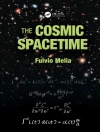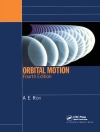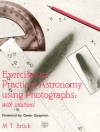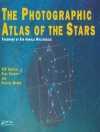The word “landscape” can mean picture as well as natural scenery. Recent advances in space exploration imaging have allowed us to now have landscapes never before possible, and this book collects some of the greatest views and vistas of Mars, Venus’s Titan, Io and more in their full glory, with background information to put into context the foreign landforms of our Solar System. Here, literally, are ‘other-worldly’ visions of strange new scenes, all captured by the latest technology by landing and roving vehicles or by very low-flying spacecraft.
There is more than scientific interest in these views. They are also aesthetically beautiful and intriguing, and Dr. Murdin in a final chapter compares them to terrestrial landscapes in fine art.
Planetary Vistas is a science book and a travel book across the planets and moons of the Solar System for armchair space explorers who want to be amazed and informed. This book shows what future space explorers will experience, because these are the landscapes that astronauts and space tourists will see.
विषयसूची
Chapter 1: Landscapes on Other Worlds.- Chapter 2: The Lakes of Titan.- Chapter 3: The Craters of the Lunar Landscape.- Chapter 4: Ice and Dust Fountains, Rock Piles.- Chapter 5: Dusty Plains, Steep Hills and Rugged Lunar Mountains.- Chapter 6: The Rocky Landscapes of Mars.- Chapter 7: The Vulcanic Scenery of Venus and Io.- Chapter 8: Frost, Ice and Snow.- Chapter 9: Cosmic Skyscapes.- Chapter 10: Representing Alien Landscapes.- Appendix 1: Down to Earth.- Appendix 2: Space Exploration Missions.- Bibliography.- Index.
लेखक के बारे में
Paul Murdin is an internationally known astronomer with a track record of well-written books and eloquent lectures about astronomy. He has been honored with an OBE in 1988, the Award of the Royal Astronomical Society for Services to [professional] Astronomy in 2011, the Eric Zucker Award of the Federation of Astronomical Societies for outreach to amateur astronomers, in 2012, and the name of asteroid 128562 Murdin.
Educated at the universities of Oxford and Rochester, NY, Paul has worked as an astronomer in the USA, Australia, England, Scotland and in Spain, where he led the operation of the Anglo-Dutch Isaac Newton Group of telescopes in the Canary Islands. He has been a research scientist (studying supernovae, neutron stars and black holes – in 1972 Paul discovered the nature of the first black hole known in our Galaxy, Cygnus X-1) and a science administrator for the UK Government and the Royal Astronomical Society. He works at the Institute of Astronomy at the University of Cambridge, England, and is Visiting Professor at John Moores University, Liverpool. He has a secondary career as a broadcaster and commentator for the BBC and CNN, as well as a lecturer and writer on astronomy, including repeat appearances on BBC Radio 4’s In Our Time and at a number of literary and science festivals, like those at Hay-on-Wye and Edinburgh, and on the Cunard liner Queen Elizabeth 2. His most recent books include Secrets of the Universe: how we discovered the Universe (Thames and Hudson, 2009), Mapping the Universe (Carlton, 2011), and Are We Being Watched? The Search for Life in the Cosmos (Thames and Hudson, 2013).












